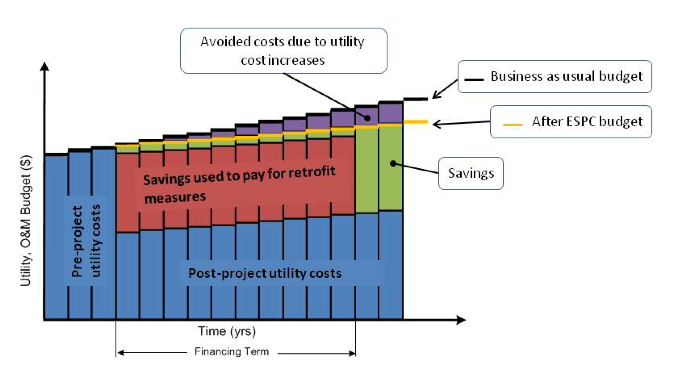No Federal Datacenter Left Behind
Federal datacenters are struggling to meet consolidation and energy efficiency goals set by the Federal Data Center Consolidation Initiative (FDCCI) in 2010. With less than two years left to hit 2015 targets and limited funding for the effort, datacenter managers are looking to alternative solutions, like Energy Savings Performance Contracts (ESPCs).

These contracts make it possible for federal agencies to use private sector dollars for green projects. The first step for the agency is to partner with an energy service company (ESCO). The ESCO conducts an energy audit for the facility and identifies areas where improvements can be made in regard to energy efficiency. The ESCO will then design and construct a project, with energy savings guaranteed, that meets the datacenter's requirements. The ESCO also arranges for the project's financing.
The federal agencies have up to 25 years to repay the debt, plus interest of course, with the money gained from the energy savings. Interest rates vary quite a bit, but typically run between 4-6 percent. Which raises an important question: Doesn't the federal government (and by extension taxpayers) end up paying more in the long run by relying on private sector investors for the upfront capital?
A report from the National Renewable Energy Laboratory explains that swift action is where the real advantage lies:
"An alternative strategy for executing facility upgrades is to identify a project(s) and request funding from financial management," the report states. "Most likely, these funding requests compete with other capital projects and their fulfillment will be ranked by some economic criteria. As a result, it may take several years before an energy conservation project receives funding. By waiting for appropriated funds [i.e. federal dollars] to implement a much-needed upgrade, the long-term cost of inaction will typically exceed the cost incurred from acting promptly."
After the project is paid off, all the savings accrue directly to the facility's coffers.
 |
|
| Annual energy-related budget, showing an increase in savings from avoided costs – Source | |
Datacenters vary in size and equipment and the approach taken to consolidate and meet their individual energy goals will differ as well. However, there is an essential element that can really give all datacenters an extra push. ESCOs can install an energy management system (EMS) so that energy consumption is monitored and controlled throughout the datacenter. This allows datacenter managers to get a bigger picture of their datacenter, good or bad, so that appropriate changes can be made.
By implementing an ESPC, the federal datacenters that are in a bind can wiggle their way free. Not only will they get immediate monetary assistance, these datacenters will reach their energy goals and federal mandates as well.
While federal datacenters are well-matched for this program, the option extends to most buildings in the government sector, including universities, where there is potential for energy savings. The University of Kentucky, for example, has entered into an ESPC with Ameresco. Once the renovations are complete, the school expects to see an annual energy savings of $2,430,383. In addition, their carbon footprint will be reduced the same amount as if 46,234 cars were removed from the roads.
University of Kentucky President Lee T. Todd Jr. had only positive things to say about the school's contract with Ameresco. "Creating a more energy-efficient campus community is something I have championed for the past nine years. Conservation of our natural resources is not only good for our bottom-line, it is good for the future strength and vitality of our Commonwealth. I am proud that our partnership with Ameresco will help us utilize our resources in a more sustainable manner."










